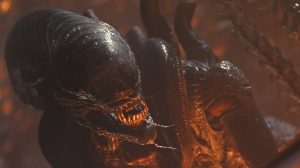
The Distinct Appearance of Harkonnens in Dune: Prophecy
Warner Bros. is actively expanding its “Dune” universe with the HBO series “Dune: Prophecy.” This new series, set 10,000 years before the acclaimed films by Denis Villeneuve, explores the origins of the Bene Gesserit sisterhood and unfolds after Brian Herbert’s “Great Schools of Dune” novels. With a strong cast featuring Emily Watson and Olivia Williams, it’s notable for its impressive production and costume designs, although the storytelling may leave some wanting.
Prequels and origin stories often have a reputation for being less compelling. Many audience members might find them lacking in originality, as they can feel like mere fill-in-the-blank exercises that narrate stories already familiar to fans. While some unexpected elements might surface, they often seem like trivial additions to the broader narrative. This trend in storytelling has become so prevalent that it feels inevitable we’ll soon see films focused on minor characters and backstories that don’t warrant their own feature.
Now, let’s get to the heart of the matter: the Harkonnens and their stark visual transformation over the millennia leading to Denis Villeneuve’s films. In “Dune: Prophecy,” characters portrayed by Emily Watson and Olivia Williams, Mother Superior Valya Harkonnen and Reverend Mother Tula Harkonnen, present a striking contrast in appearance to Baron Harkonnen, Glossu Raban, and Feyd-Rautha, who are characterized by their pale skin and bald heads.
The fundamental reason for this visual shift lies in the origins of House Harkonnen. In “Dune: Prophecy,” they are depicted as originating from the planet Lankiveil, known for its more hospitable climate compared to the harsh, volcanic Giedi Prime, which orbits a black sun. The extreme environmental differences between these two planets inevitably affect the physical attributes of its inhabitants.
While the details surrounding House Harkonnen’s migration from Lankiveil to Giedi Prime may be explored in the series, the time span of 10,000 years suggests a complex history involving societal changes and potential conflicts that shaped their transformation. For viewers interested in unraveling this fictional history, the journey may unfold gradually across the series seasons. Meanwhile, many eagerly await Villeneuve’s anticipated third installment, slated for release around 2026.




